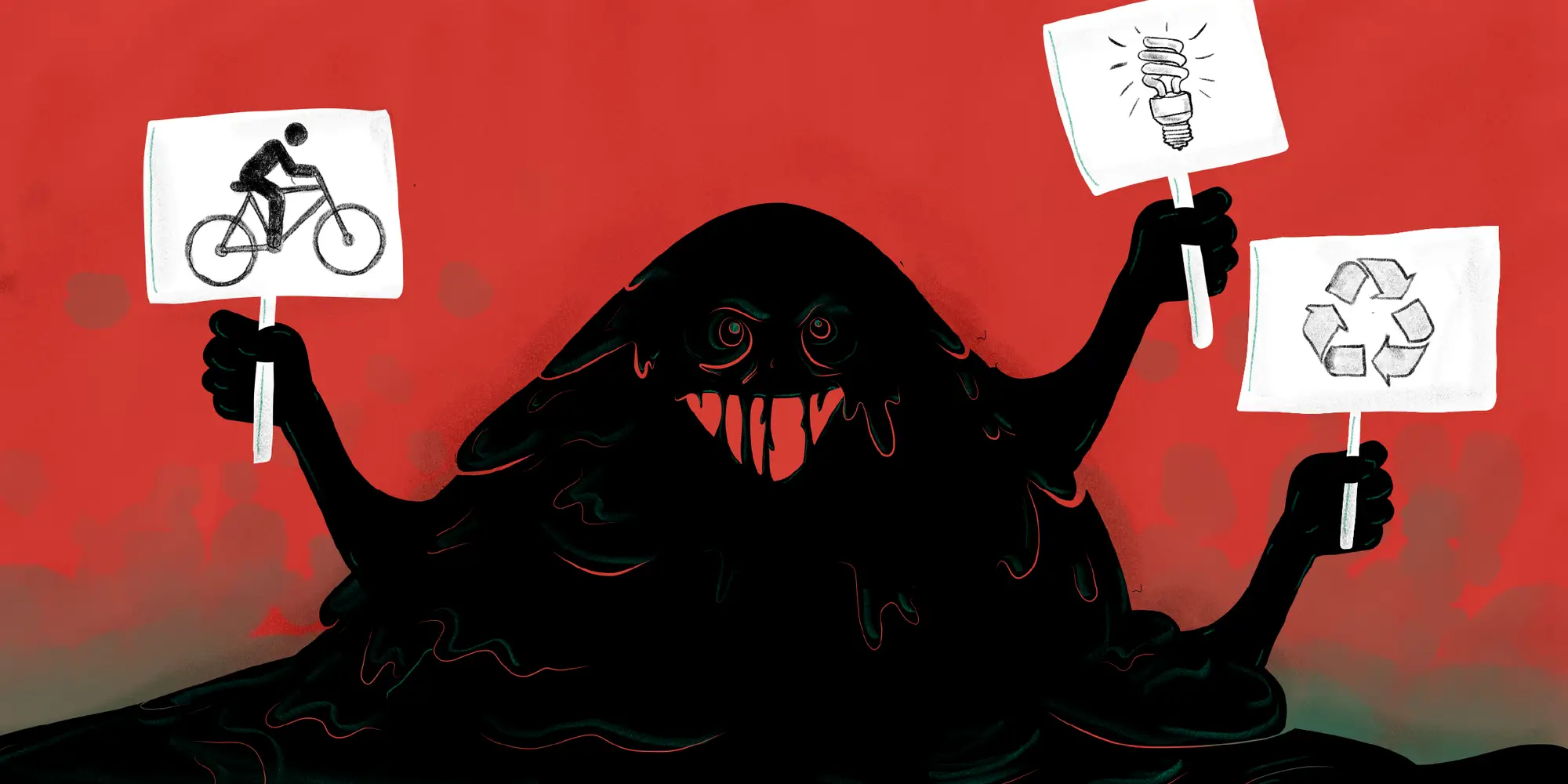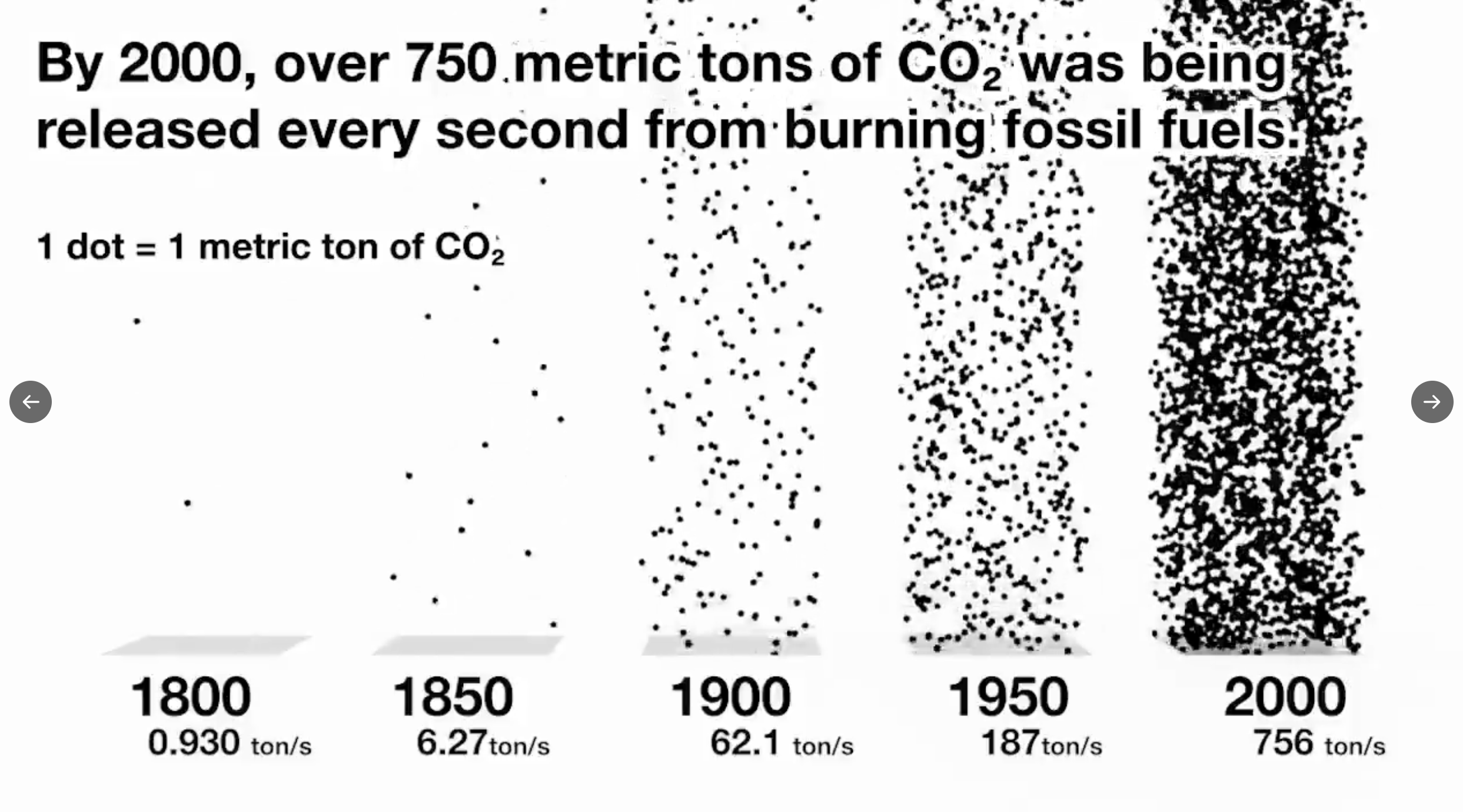People vs. Fossil Fuels (pt. 2)
What the numbers tell us about our climate antagonists
Today is Day 4 of the week of climate civil disobedience in D.C. So far, nearly 100 activists have been arrested each day.
Day 3 #peoplevsfossilfuels:
— Indigenous Environmental Network (@IENearth) 2:17 AM ∙ Oct 14, 2021
Nearly 300 people have been arrested outside of @JoeBiden's house since Monday demanding he take aggressive climate action and halt fossil fuel projects. We aren't backing down, Joe!
Why does it matter? Because Biden has the executive power to stop two dozen fossil fuel infrastructure projects in the United States. A recent analysis found that “the 24 projects analyzed would release combined annual greenhouse gas pollution equivalent to approximately 20% of 2019 U.S. emissions.” Biden could help prevent these emissions from ever entering the atmosphere. These projects include the widely protested Line 3 pipeline.
I spent a long time trying to figure out what to include in today’s newsletter about this topic. About why it’s essential to see this fight for what it is: a fight against the fossil fuel industrial complex.
For sake of brevity, I’ll stick to a few bullet points:
1. They knew
Exxon has known about the negative impacts of gas and oil extraction since 1977. That’s 44 years of denial. Their original report admitted: “burning fossil fuels will cause dramatic environmental effects in the coming decades.”
Turns out, other fossil fuel companies also knew for decades:
- BP acknowledged the reality of climate change from fossil fuel use in 1997
- Shell researchers linked extreme weather events to fossil fuel extraction in 1998
- As early as 1966, the coal industry knew that unrestricted burning of coal would lead to temperature rise: “There is evidence that the amount of carbon dioxide in the earth’s atmosphere is increasing rapidly as a result of the combustion of fossil fuels…if the future rate of increase continues as it is at the present, it has been predicted that, because the CO2 envelope reduces radiation, the temperature of the earth’s atmosphere will increase and that vast changes in the climates of the earth will result.”
Despite knowing the harm they caused, these companies went on to spend billions in lobbying and advertising to spread doubt about climate change.
2. We can’t afford more extraction
To prevent another climate tipping point, most coal, oil, and gas needs to stay in the ground.
Fossil fuel producers should avoid extracting at least 90% of coal reserves and 60% of oil and gas reserves by 2050, according to a study published in Nature, to limit global temperature rise to 2.7 degrees Fahrenheit. Even then, that gives the planet only a 50% chance of avoiding a climate hotter than that. - NPR
3. We have the solutions to fix it: soon and saving money
A study from UC Berkeley and Gridlab found that it is indeed possible to power the U.S. on 90 percent clean electricity by 2035. In fact, to do so would make electricity production 13% cheaper. This data directly refutes Republican fearmongering over the impact of a Green New Deal on electricity prices.
4. They plan to keep extracting and burning anyways
A report from November of 2019 showed that governments around the world are planning to burn 120% more fossil fuels by 2030 than we can afford if we want a planet below 1.5 degrees C of warming. That is an increase in the exact wrong direction.
The reasons for this are too in depth for this newsletter, but much of it comes down to two industry terms: reserves and stranded assets. Reserves include oil not yet extracted from the ground, but oil companies use these numbers as an indicator to shareholders on how “stable” their stock will be. Stranded assets are things like an oil pipeline built to last for 30 years, but shut down before the company can make back the money they spent on it.
To understand more, I highly recommend reading This Changes Everything by Naomi Klein. For now, I’ll leave this excerpt (published in 2014, but idea still applies):
The total amount of carbon in reserve represents roughly $27 trillion—more than ten times the annual GDP of the United Kingdom. If we were serious about keeping warming below 2 degrees, approximately 80 percent of that would be useless, stranded assets. Given these stakes, it is no mystery why the fossil fuel companies fight furiously to block every piece of legislation that would point us in the right emissions direction, and why some directly fund the climate change denier movement.
We are seeing more fossil fuel companies rebrand as “energy” companies, interested in “green solutions” and “innovation”. But the spending on new fossil fuel infrastructure just doesn’t add up. The actions are not yet aligning with the promises.
Basically, it’s greenwashing:
“It’s the epitome of greenwashing — act dirty, talk green” - I talk to @RollingStone's @GeoffDembicki about Chevron's mind-boggling 65 TV ads PER DAY over the past 15 months:
— Geoffrey Supran (@GeoffreySupran) 2:31 PM ∙ Oct 11, 2021
🌏80% of Chevron's ads talk green
🔥99.8% of their spending is dirty rollingstone.com/politics/polit…
One thing is becoming clear: the momentum is not on the side of the polluters. But as this week’s protests have shown, it’s still an uphill battle to persuade the US government to take strong enough action now.
And now for some more data-related links.
Read this

The companies polluting the planet have spent millions to make you think carpooling and recycling will save us
This is a tricky line to walk: on the one hand, overemphasizing the lack of impact individual actions have can lead to climate fatalism. On the other hand, the data seems to point a clear finger. One study referenced in this article found that “individual behavioral changes would only account for about 4% of the necessary reductions” to meet a net-zero energy system by 2050.
I try to take this with a grain of salt and take a “both/and” perspective. We can encourage recycling, carpooling, etc. AND fight like hell to force our governments and energy providers to make the systemic changes necessary to avoid climate disaster. It’s important to recognize the blame-shifting tactic here though; big polluters do not want the attention on them. They want you to feel partially responsible for this crisis. This article shows how the data reveals this to overwhelmingly not be the case at the individual level.
Explore

Visualizing the Quantities of Climate Change
Matthew Conlen created an interactive data viz essay for NASA which attempts to visualize and quantify our cumulative CO2 emissions over time. Really puts it into perspective how dramatic of an increase we have seen in the last 50 years.
Learn

An Observable notebook that provides Historical Hourly Weather Data by U.S. City
This notebook provides a nice interface for selecting any major city in the US and querying time series data form NOAA. Metrics to visualize include air temperature, wind direction, wind speed, sea level pressure, sky condition, and precipitation.





